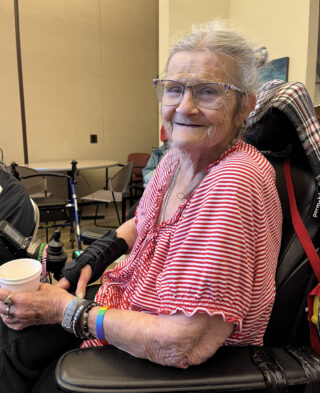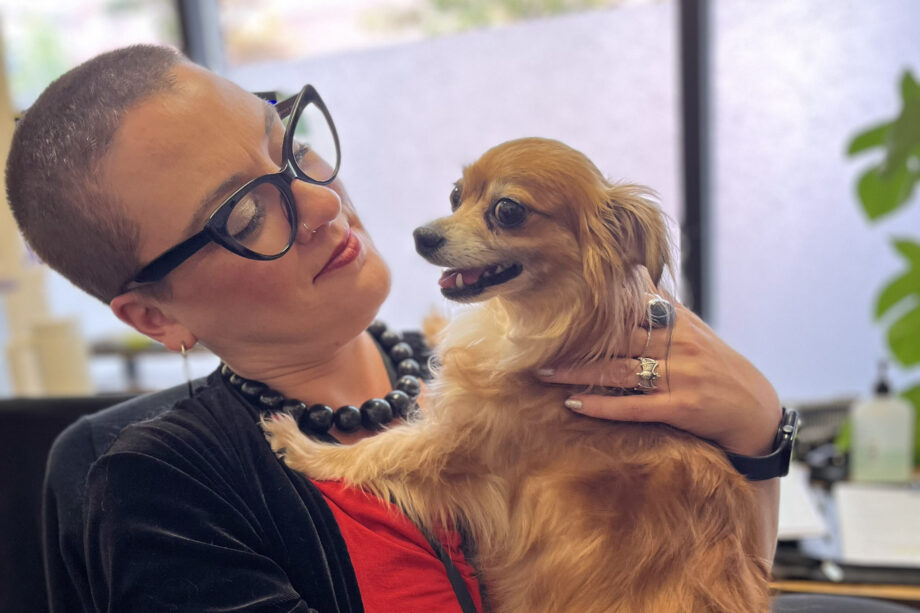When Nina McPherson (she/they) walks into Macdonald Residence, our 54-unit assisted living facility, she knows no day will ever be exactly the same—and that’s one reason she loves her job. As a Behavioral Support Specialist, she can be called at a moment’s notice to de-escalate conflicts and support Residents in emotional distress.

But in a building where emotions can run high, Nina’s focus is less about “putting out fires” and more about keeping sparks from catching in the first place. By building consistent relationships and being aware of how each Resident is doing physically, emotionally, and psychologically, she can spot early signs of stress and help Residents navigate challenges before they become crises.
“The goal,” Nina shares, “is to keep people safe, healthy, happy, and well. And to do that, you have to really know them.”
It’s the quiet, steady work to build relationships with Residents that prevents escalation. Nina does this one-on-one, but also by leading groups such as Seeking Safety, a program addressing co-occurring substance use and PTSD, and a lighter-hearted gathering, Teatime with Nina where connection itself becomes prevention.
It’s these relationships and attention to small details that can really make a meaningful impact. For example, during a regular one-on-one check-in, a Resident explained he wasn’t joining group activities, not because he didn’t want to, but because he couldn’t read the printed calendar. The fix was small but transformative. Staff began sharing the day’s schedule verbally, and the Resident started engaging more. His mood improved, his substance use decreased, and his overall quality of life grew dramatically.

Moments like this show how prevention happens in real time through compassion, awareness, and small, intentional adjustments.
“It can be challenging,” Nina admits, “but it’s worth it. I love that we provide quality of life to people who likely wouldn’t have it otherwise.”
After three years, Nina sees clearly how this proactive, person-centered care makes a difference—not just for individual Residents, but for the whole community.
“Macdonald Residence is doing good work. It’s important work,” affirms Nina. “It’s necessary work for people to have a quality of life, and there needs to be more places like this.”
-Nina McPherson, Behavioral Support Specialist



Stevie Lix, the ten-pound Pomeranian-Chihuahua, is a valued member of the Behavioral Health Support Team. Her pup-ortunities to shine come often. “When someone’s really dysregulated and upset, I’ll bring Stevie out,” says Nina. “She calms their nervous system and helps them connect. She works hard—she actually needs a raise.”
